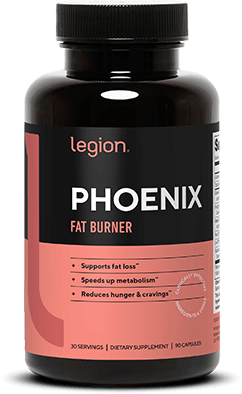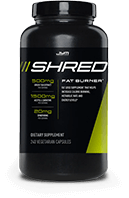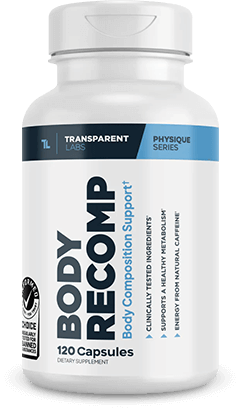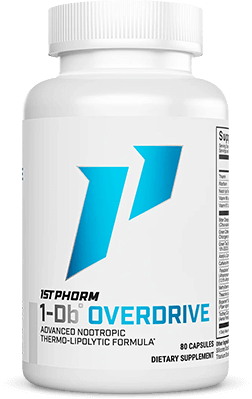If you don’t like something of ours, guess what happens next?
No, we don’t request you deliver it to a PO box in the Gobi Desert by carrier pigeon. Nor do we ask you to fill a cursed inkwell with orc’s blood and demon saliva and then use it to complete reams of return forms written in ancient Cyrillic script.
We just . . . wait for it . . . give you every penny of your money back. Holy moo cows. And that means you can say "yes" now and decide later.
Legion Phoenix Ingredients (1,430 milligrams per serving)
PurCaf® Natural and Organic Caffeine (200 milligrams per serving)
Caffeine is a naturally occurring substance found in many plants native to Africa, East Asia, and South America, including various kinds of tea, cocoa, and coffee.
PurCaf® is an organic, patented form of caffeine extracted from non-GMO green coffee beans using a proprietary clean-water process.
Naturally derived caffeine tastes significantly better than its synthetic counterpart, and anecdotally, many people report that it provides a "smoother" boost of energy, possibly due to beneficial compounds like chlorogenic acids and antioxidants found in natural caffeine but absent in synthetic versions.
Caffeine’s primary effects in the body are to stimulate the central nervous system and block the activity of another chemical—adenosine—that causes tiredness.
Research shows that supplementation with PurCaf® caffeine . . .
- Boosts mood and energy levels[8]
- Improves focus, drive, and wakefulness[9][10][11]
- Increases metabolic rate[12]
- Enhances strength and power[13][14][15][16][17]
- Boosts endurance[18][19][20]
- Improves anaerobic performance[21][22][23][24][25]
The clinically effective dose of caffeine for enhancing energy, focus, and performance is between 50 milligrams and 6 milligrams per kilogram of body weight.[26][27][28]
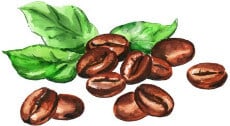
Green Coffee Bean Extract (500 milligrams per serving)
Green coffee bean extract is derived from unroasted coffee beans, which are richer in chlorogenic acid—the compound responsible for many of its health benefits—than roasted beans.[29]
Research shows that supplementation with chlorogenic acid aids fat loss by activating the protein PPAR-α and increasing the hormone adiponectin, both of which promote fat burning and increase energy expenditure.[30][31]
Studies also show that chlorogenic acid further supports fat loss by inhibiting glucose-6-phosphatase, an enzyme that can reduce fat storage.
Scientists haven’t yet established the clinically effective dose of green coffee bean extract, but studies show that doses providing up to 500 milligrams of chlorogenic acid are effective.
Irvingia® IGOB-131 Seed Extract (300 milligrams per serving)
Irvingia gabonensis, also known as African mango, is a fruit native to West Africa that has traditionally been used to support weight management and metabolic health.
Irvingia® IGOB-131 is a patented, natural extract of Irvingia gabonensis standardized to contain 7% albumins (proteins that improve absorption) and 1% ellagic acid, an antioxidant that has been studied for its anti-inflammatory effects.[32][33]
Research shows that supplementation with Irvingia® IGOB-131 limits fat gain by inhibiting enzymes involved in fat storage and fat cell formation, including PPAR-γ, lipoprotein lipase, and fatty acid synthase.[34][35][36]
Additionally, it increases adiponectin—a hormone that enhances fat burning—and lowers leptin, a hormone that signals hunger, which can help reduce cravings and overall hunger.[37]
The clinically effective dose of Irvingia gabonensis seed extract is 300 milligrams per day.
Green Tea Leaf Extract (250 milligrams per serving)
Green tea leaf extract comes from green tea leaves and is rich in catechins, the class of compounds responsible for many of green tea’s health benefits.[38]
The most potent catechin is epigallocatechin gallate (EGCG), which slows the breakdown of norepinephrine—a chemical that promotes fat breakdown and increases energy expenditure. That’s why research shows that supplementation with green tea leaf extract can support fat loss and may help reduce abdominal fat in particular.[39][40][41][42][43][44]
Studies suggest that green tea leaf extract may also amplify the fat-burning effects of exercise, inhibit fat cell formation, and encourage the body to use fat rather than carbohydrate for energy.[45][46][47][48][49][50][51]
What’s more, green tea leaf extract’s effects are even greater when paired with caffeine, as caffeine boosts catecholamine levels, while green tea leaf extract prolongs their effects.[52]
The clinically effective dose of green tea leaf extract varies according to its EGCG content, but it’s commonly around 250 milligrams of extract delivering roughly 150 milligrams of EGCG.
Grains of Paradise (30 milligrams per serving)
Grains of Paradise is the common name for the plant Aframomum melegueta, which is an herb in the ginger family that’s commonly used as a spice.
It contains various compounds like 6-gingerol and 6-paradol that influence receptors on fat cells involved in energy regulation and temperature perception.
That’s why research shows that supplementation with Grains of Paradise increases energy expenditure and reduces visceral fat levels.[53][54]
The clinically effective dose of Grains of Paradise is around 30 milligrams of an extract providing 3-to-4 milligrams of 6-paradol.
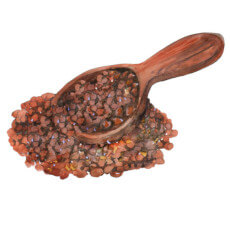
5-HTP (150 milligrams per serving)
5-HTP is a compound produced by the metabolism of the amino acid tryptophan, which is found in foods like milk, meat, potatoes, pumpkin, and various greens.
It’s converted into serotonin in the brain—a key neurotransmitter that plays a central role in regulating mood, appetite, and reward-seeking behavior.
That’s why research shows that supplementation with 5-HTP supports mood, increases feelings of fullness, helps control food intake, and reduces cravings for carbohydrates in particular.[55][56][57]
The clinically effective dose of 5-HTP is between 150 and 500 milligrams.

No Harsh Stimulants, Artificial Food Dyes, Fillers, or Other Unnecessary Junk
Many fat burners rely primarily on a heap of cheap stimulants to work, including chemicals that can be harmful to your health when consumed regularly.
Phoenix, on the other hand, comes in two versions:
- Without stimulants
- With a moderate dose of just one well-tolerated stimulant: caffeine (200 milligrams per serving)
What’s more, Phoenix doesn’t contain any artificial food dyes, fillers, or other unnecessary junk.
Such ingredients may not be as dangerous as many people claim, but studies show they can cause negative effects in some people, including gastrointestinal toxicity and behavioral disorders.[58][59][60][61][62]
That’s why we use natural coloring derived from fruits and other foods as well as naturally derived ingredients for enhancing shelf life and facilitating the manufacturing process.
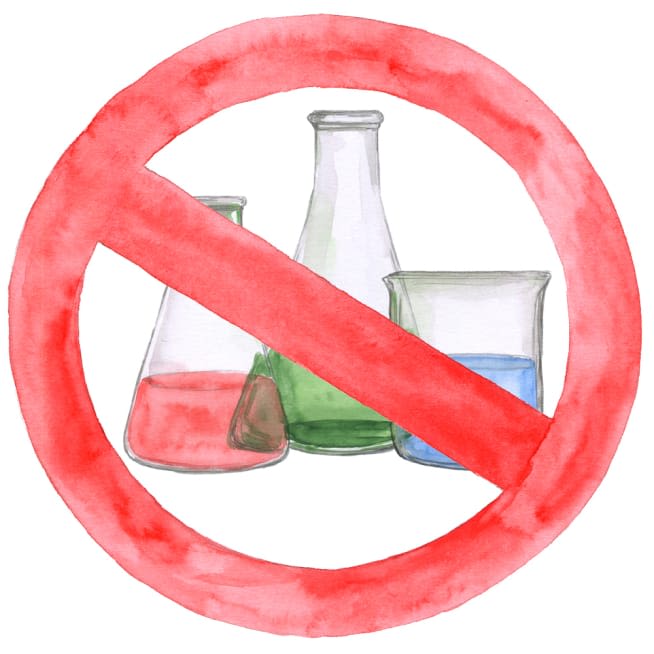
Third-Party Lab Tested for Purity and Potency
Phoenix is tested by a state-of-the-art ISO 17025-accredited third-party laboratory for heavy metals, microbes, allergens, and other contaminants to ensure compliance with FDA purity standards.
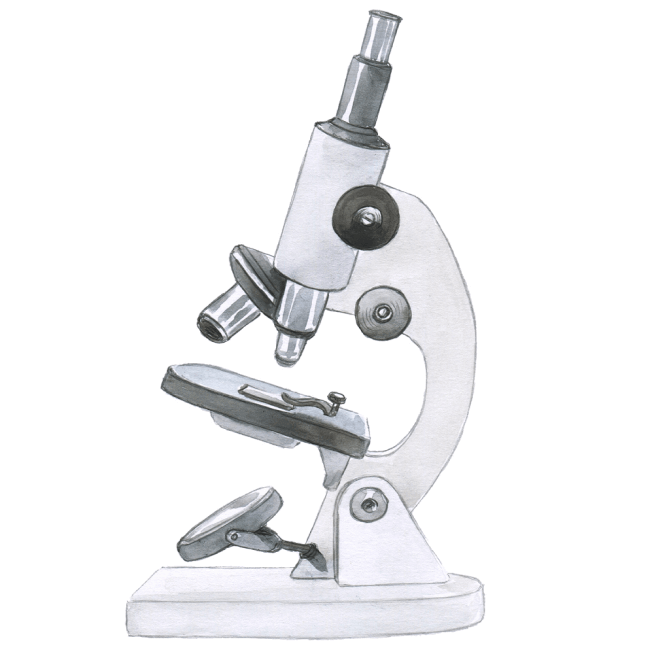
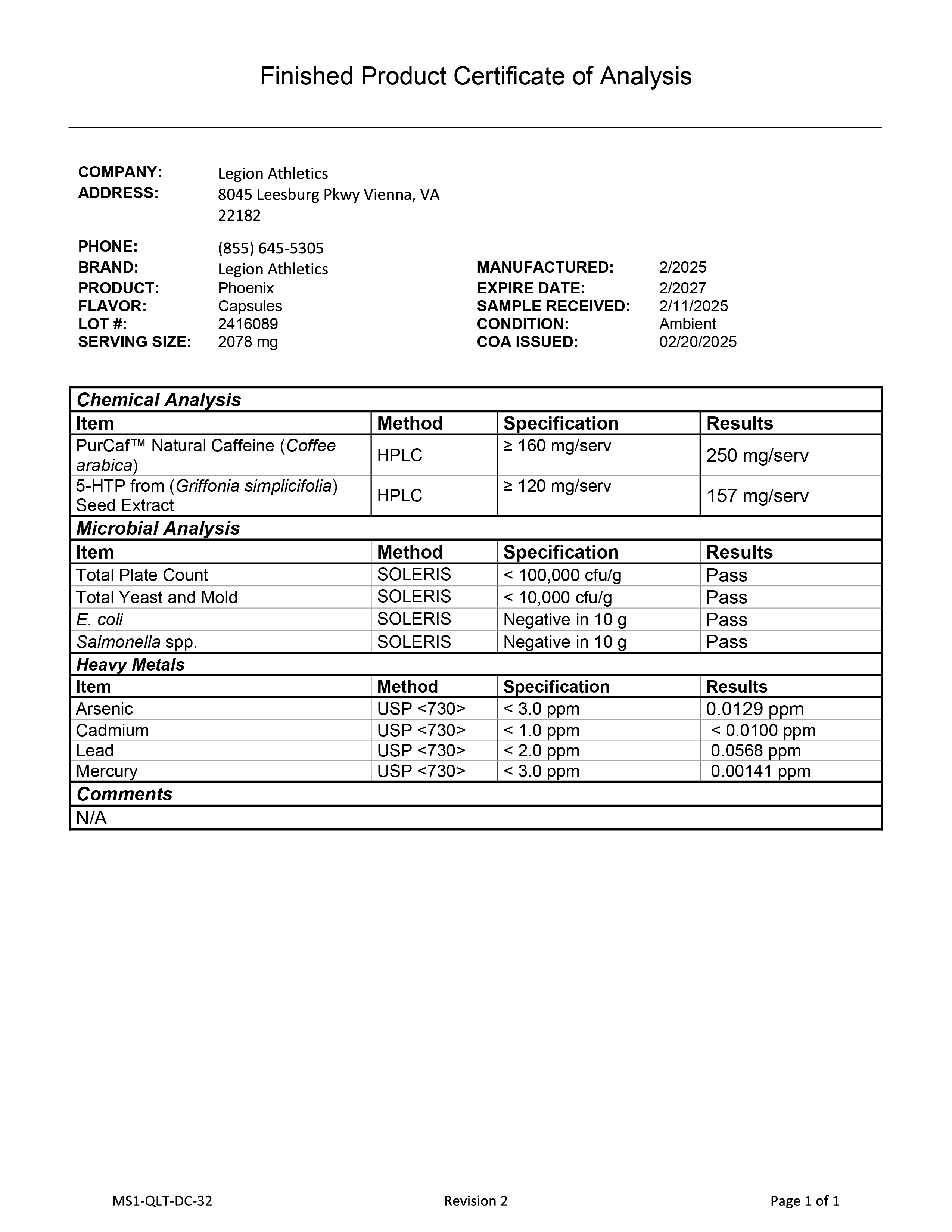
See how Legion Phoenix compares to the rest.
- Active Ingredients
- Clinically Effective Ingredients
& Doses - Caffeine
- Green Coffee Bean Extract
- Irvingia® IGOB-131 Seed Extract
- Green Tea Leaf Extract
- Grains of Paradise
- 5-HTP
- Third-Party Lab Tested
- Labdoor Certified Brand
- Price Per Serving
-
Legion
Phoenix
- 1,430 mg
per serving - 200 mg
per serving - 500 mg
per serving - 300 mg
per serving - 250 mg
per serving - 30 mg
per serving - 150 mg
per serving - $
-
Shred
JYM
- 2,770 mg
per serving - 200 mg
per serving - 500 mg
per serving - $0.95
-
Transparent Labs
Body Recomp
- 855 mg
per serving - 125 mg
per serving - 300 mg
per serving - $0.92
-
1st Phorm
1-DB Overdrive
- 1,316 mg
per serving - 150 mg
per serving - 250 mg
per serving - 250 mg
per serving - 50 mg
per serving - $1.75
The #1 brand of naturally sweetened and flavored sports supplements.
We’ve sold over 5 million bags and bottles to over 1 million customers in 169 countries who have left us over 55,000 5-star reviews.
Clinically Effective Ingredients and Doses
Every active ingredient, form, and dose in Phoenix is backed by peer-reviewed scientific research demonstrating clear benefits in healthy humans.
No Unnecessary Junk
Phoenix contains no artificial food dyes, fillers, or other unnecessary junk.
Total Label Transparency
We clearly list the dose of each ingredient in Phoenix on the label—no proprietary blends or hidden ingredients—so you can verify our formulation’s validity and effectiveness.
Third-Party Lab Tested for Purity and Potency
Phoenix is tested by a state-of-the-art ISO 17025-accredited third-party laboratory for heavy metals, microbes, allergens, and other contaminants to ensure compliance with FDA purity standards.
Made in the USA
Phoenix is made in America with globally sourced ingredients in NSF-certified, FDA-inspected facilities that adhere to Current Good Manufacturing Practice (cGMP) standards.
100% Money-Back Guarantee
If you don't absolutely love Phoenix, you get a prompt and courteous refund. No forms or returns necessary.
Trusted by scientists, doctors, and everyday fitness folk alike.
Frequently Asked Questions
+References
Some popular fat loss supplements contain the right mix of high-quality ingredients. Some provide clinically effective doses. Some don’t have any unnecessary junk. But only Phoenix checks each of these boxes. ↑
Every serving of Phoenix contains 1,430 milligrams of active ingredients that have been shown to be safe and effective in peer-reviewed scientific research.↑
Each active ingredient in Phoenix is backed by published scientific studies that show benefits in healthy humans.↑
Phoenix doesn’t contain any harsh stimulants that wind you up and burn you out—just caffeine, and just 200 milligrams per serving.↑
That’s 478 pages of scientific research that shows Phoenix works exactly like we say it does.↑
While these types of chemicals may not be as dangerous as some people claim, studies suggest that regular consumption of them may indeed be harmful to our health. And that’s why you won’t find them in Phoenix.↑
Every bottle of Phoenix is guaranteed to provide exactly what the label claims and nothing else—no heavy metals, microbes, allergens, or other contaminants.↑
Spriet LL. Sports Med. 2014;44 Suppl 2(Suppl 2):S175-S184. doi:10.1007/s40279-014-0257-8. ↑
McLellan TM, Caldwell JA, Lieberman HR. Neurosci Biobehav Rev. 2016;71:294-312. doi:10.1016/j.neubiorev.2016.09.001. ↑
Crawford C, Teo L, Lafferty L, et al. Nutr Rev. 2017;75(suppl_2):17-35. doi:10.1093/nutrit/nux007. ↑
Kamimori GH, McLellan TM, Tate CM, Voss DM, Niro P, Lieberman HR. Psychopharmacology (Berl). 2015;232(12):2031-2042. doi:10.1007/s00213-014-3834-5. ↑
Astrup A, Toubro S, Cannon S, Hein P, Breum L, Madsen J. Am J Clin Nutr. 1990;51(5):759-767. doi:10.1093/ajcn/51.5.759. ↑
Beck TW, Housh TJ, Schmidt RJ, Johnson GO, Housh DJ, Coburn JW, Malek MH. Department of Nutrition and Health Sciences, Human Performance Laboratory, University of Nebraska-Lincoln. J Strength Cond Res. 2006 Aug;20(3):506-10. ↑
Warren GL, Park ND, Maresca RD, McKibans KI, Millard-Stafford ML. Med Sci Sports Exerc. 2010;42(7):1375-1387. doi:10.1249/MSS.0b013e3181cabbd8.↑
Grgic J, Pickering C. J Sci Med Sport. 2019;22(3):353-360. doi:10.1016/j.jsams.2018.08.016.↑
Grgic J, Trexler ET, Lazinica B, Pedisic Z. J Int Soc Sports Nutr. 2018;15:11. Published 2018 Mar 5. doi:10.1186/s12970-018-0216-0.↑
Grgic J. Eur J Sport Sci. 2018;18(2):219-225. doi:10.1080/17461391.2017.1394371.↑
Beck TW, Housh TJ, Schmidt RJ, Johnson GO, Housh DJ, Coburn JW, Malek MH. Department of Nutrition and Health Sciences, Human Performance Laboratory, University of Nebraska-Lincoln. J Strength Cond Res. 2006 Aug;20(3):506-10. ↑
Warren GL, Park ND, Maresca RD, McKibans KI, Millard-Stafford ML. Med Sci Sports Exerc. 2010;42(7):1375-1387. doi:10.1249/MSS.0b013e3181cabbd8.↑
Polito MD, Souza DB, Casonatto J, Farinatti P. Sci Sports. 2016;31(3):119-128. doi:10.1016/J.SCISPO.2016.01.006.↑
Beck TW, Housh TJ, Schmidt RJ, Johnson GO, Housh DJ, Coburn JW, Malek MH. Department of Nutrition and Health Sciences, Human Performance Laboratory, University of Nebraska-Lincoln. J Strength Cond Res. 2006 Aug;20(3):506-10. ↑
Ganio MS, Klau JF, Casa DJ, Armstrong LE, Maresh CM. J Strength Cond Res. 2009;23(1):315-324. doi:10.1519/JSC.0b013e31818b979a.↑
Shen JG, Brooks MB, Cincotta J, Manjourides JD. J Sci Med Sport. 2019;22(2):232-238. doi:10.1016/j.jsams.2018.07.022.↑
Southward K, Rutherfurd-Markwick KJ, Ali A. [published correction appears in Sports Med. 2018 Aug 9;:]. Sports Med. 2018;48(8):1913-1928. doi:10.1007/s40279-018-0939-8.↑
Desbrow B, Biddulph C, Devlin B, Grant GD, Anoopkumar-Dukie S, Leveritt MD. J Sports Sci. 2012;30(2):115-120. doi:10.1080/02640414.2011.632431.↑
Ganio MS, Klau JF, Casa DJ, Armstrong LE, Maresh CM. J Strength Cond Res. 2009;23(1):315-324. doi:10.1519/JSC.0b013e31818b979a.↑
McLellan TM, Caldwell JA, Lieberman HR. Neurosci Biobehav Rev. 2016;71:294-312. doi:10.1016/J.NEUBIOREV.2016.09.001. ↑
Guest NS, VanDusseldorp TA, Nelson MT, et al. J Int Soc Sports Nutr. 2021;18(1). doi:10.1186/S12970-020-00383-4. ↑
Awwad S, Issa R, Alnsour L, Albals D, Al-Momani I. Molecules. 2021;26(24):7502. Published 2021 Dec 11. doi:10.3390/molecules26247502.↑
Asbaghi O, Sadeghian M, Rahmani S, Mardani M, Khodadost M, Maleki V, Pirouzi A, Talebi S, Sadeghi O. Complement Ther Med. 2020;51:102424. doi:10.1016/j.ctim.2020.102424.↑
Gorji Z, Varkaneh HK, Talaei S, Nazary-Vannani A, Clark CC, Fatahi S, Rahmani J, Salamat S, Zhang Y. Phytomedicine. 2019;63:153018. doi:10.1016/j.phymed.2019.153018.↑
Lee J, Chung M, Fu Z, Choi J, Lee HJ. J Am Coll Nutr. 2020;39(5):388-396. doi:10.1080/07315724.2019.1691956.↑
Azantsa B, Kuate D, Chakokam R, Paka G, Bartholomew B, Nash R. Funct Foods Heal Dis. 2015;5(6):200-208. doi:10.31989/FFHD.V5I6.184.↑
Lee J, Chung M, Fu Z, Choi J, Lee HJ. J Am Coll Nutr. 2020;39(5):388-396. doi:10.1080/07315724.2019.1691956.↑
Méndez-Del Villar M, González-Ortiz M, Martínez-Abundis E, Pérez-Rubio KG, Cortez-Navarrete M. J Med Food. 2018;21(6):568-574. doi:10.1089/jmf.2017.0092.↑
Ngondi JL, Oben JE, Minka SR. Lipids Health Dis. 2005;4:12. doi:10.1186/1476-511X-4-12.↑
Ngondi JL, Etoundi BC, Nyangono CB, Mbofung CM, Oben JE. Lipids Health Dis. 2009;8:7. Published 2009 Mar 2. doi:10.1186/1476-511X-8-7.↑
Yang CS, Lambert JD, Sang S. Arch Toxicol. 2009;83(1):11-21. doi:10.1007/s00204-008-0372-0.↑
Dulloo AG, Seydoux J, Girardier L, Chantre P, Vandermander J. Int J Obes Relat Metab Disord. 2000;24(2):252-258. doi:10.1038/sj.ijo.0801101.↑
Dulloo AG, Duret C, Rohrer D, et al. Am J Clin Nutr. 1999;70(6):1040-1045. doi:10.1093/ajcn/70.6.1040.↑
Kapoor MP, Sugita M, Fukuzawa Y, Okubo T. J Nutr Biochem. 2017;43:1-10. doi:10.1016/j.jnutbio.2016.10.013.↑
Auvichayapat P, Prapochanung M, Tunkamnerdthai O, et al. Physiol Behav. 2008;93(3):486-491. doi:10.1016/j.physbeh.2007.10.009.↑
Westerterp-Plantenga MS, Lejeune MP, Kovacs EM. Obes Res. 2005;13(7):1195-1204. doi:10.1038/oby.2005.142.↑
Maki KC, Reeves MS, Farmer M, et al. J Nutr. 2009;139(2):264-270. doi:10.3945/jn.108.098293.↑
Venables MC, Hulston CJ, Cox HR, Jeukendrup AE. Am J Clin Nutr. 2008;87(3):778-784. doi:10.1093/ajcn/87.3.778.↑
Maki KC, Reeves MS, Farmer M, et al. J Nutr. 2009;139(2):264-270. doi:10.3945/jn.108.098293.↑
Cardoso GA, Salgado JM, Cesar MC, Donado-Pestana CM. J Med Food. 2013;16(2):120-127. doi:10.1089/jmf.2012.0062.↑
Willems MET, Şahin MA, Cook MD. Int J Sport Nutr Exerc Metab. 2018;28(5):536-541. doi:10.1123/ijsnem.2017-0237.↑
Bagheri R, Rashidlamir A, Ashtary-Larky D, et al. Br J Clin Pharmacol. 2020;86(4):753-762. doi:10.1111/bcp.14176.↑
Wolfram S, Wang Y, Thielecke F. Mol Nutr Food Res. 2006;50(2):176-187. doi:10.1002/MNFR.200500102.↑
Rondanelli M, Riva A, Petrangolini G, et al. Nutrients. 2021;13(2):644. doi:10.3390/nu13020644.↑
Thielecke F, Rahn G, Böhnke J, et al. Eur J Clin Nutr. 2010;64(7):704-713. doi:10.1038/ejcn.2010.47.↑
Sugita J, Yoneshiro T, Sugishima Y, et al. J Nutr Sci Vitaminol (Tokyo). 2014;60(1):22-27. doi:10.3177/jnsv.60.22.↑
Sugita J, Yoneshiro T, Hatano T, et al. Br J Nutr. 2013;110(4):733-738. doi:10.1017/S0007114512005715.↑
Ceci F, Cangiano C, Cairella M, et al. J Neural Transm. 1989;76(2):109-117. doi:10.1007/BF01578751.↑
Birdsall TC. Altern Med Rev. 1998;3(4):271-280.↑
Wurtman RJ, Wurtman JJ. Obes Res. 1995;3 Suppl 4:477S-480S. doi:10.1002/j.1550-8528.1995.tb00215.x.↑
Feng J, Cerniglia CE, Chen H. Division of Microbiology, National Center for Toxicological Research, US Food and Drug Administration, AR , USA. Front Biosci (Elite Ed). 2012 Jan 1;4:568-86. ↑
Kanarek RB. Department of Psychology, Tufts University, Medford, Massachusetts, USA. Nutr Rev. 2011 Jul;69(7):385-91. ↑
Nigg JT, Lewis K, Edinger T, Falk M. Oregon Health and Science University, Portland, OR, USA. J Am Acad Child Adolesc Psychiatry. 2012 Jan;51(1):86-97.e8. ↑
McCann D, Barrett A, Cooper A, Crumpler D, Dalen L, Grimshaw K, Kitchin E, Lok K, Porteous L, Prince E, Sonuga-Barke E, Warner JO, Stevenson J. School of Psychology, Department of Child Health, University of Southampton, Southampton, UK. Lancet. 2007 Nov 3;370(9598):1560-7. ↑
Gao Y, Li C, Shen J, Yin H, An X, Jin H. Scientific and Technological College of Chemistry and Biology, Yantai Univ., Yantai, PR China. J Food Sci. 2011 Aug;76(6):T125-9. ↑
